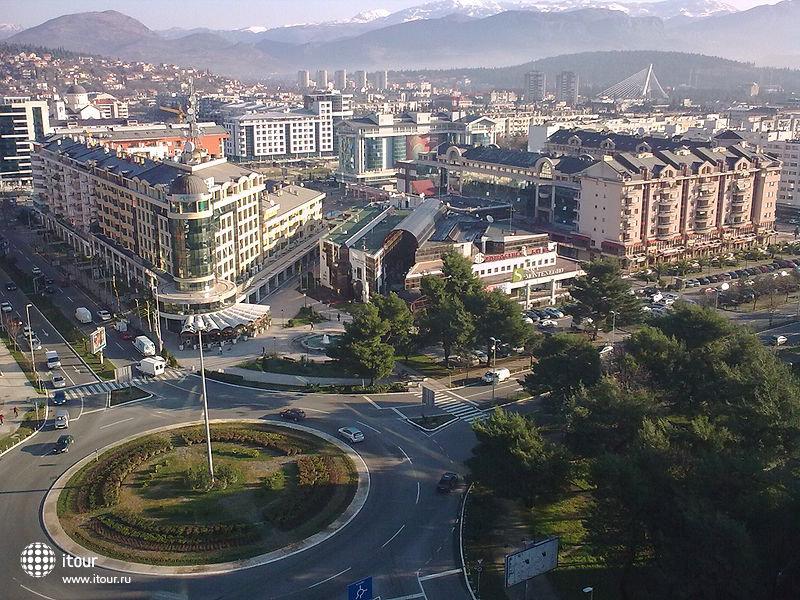Montenegro

Geographical location. Montenegro is located in south-eastern Europe, in the central part of the Balkan Peninsula. On the west it shares borders with Croatia, in the north-west and north - with Bosnia and Herzegovina, in the north-east - with Serbia and in the south-east - with Albania. Land frontier length - 614 km. Montenegro has access to the Adriatic Sea.
Population. The population of Montenegro is more than 620 thousand people. Ethnic groups: Montenegrins – 45%, Serbs - 29%, Bosnians - 8.6%, Albanians - 5%, Muslims - 3%, Croats - about 1%, Gipsy - 1% ..
Administrative division. 40 towns and 1256 communities are selected in 21 municipalities.
Capital of Montenegro - Podgorica (1946-1992 - Titograd).
City of Cetinje has a status of the historical capital.
Major cities are Niksic, Bijelo Polje, Bar, Berane, Herceg Novi, Kotor.
The head of Montenegro is President, who is elected by direct and secret ballot for a term of five years.
The highest legislative body is unicameral Assembly (81 seats). Deputies are elected for a term of four years.
State symbols of Montenegro are: the coat of arms (double-headed golden eagle on a red background, with a scepter in a right leg and orb in a left leg; chest of eagle has a shield with a moving lion on a green background), flag (red flag with coat of arms, covering 2/3 of its height in the middle and with gold trim (width 1/20 height), aspect ratio - 2:1), anthem ("Oh, Bright Dawn of May").
National holiday is the Statehood Day (July 13). This date is related to two events in the history of Montenegro – recognition of it as an independent state at the Congress of Berlin in 1878 and the rising against Nazi invaders in 1941.
The Independence Day is also celebrated as national holiday on May 21. That day, in 2006, Montenegro held a referendum on the country's political independence.
Has no one’s own currency. Since 1999, as means of payment were used DM, now - euro (introduced from 1 January 2002).
Historical information. Slavs settled in the current territory of Montenegro in the VII century. Before the XI century it was called Duklja, then Zeta, and the XIV century was called Montenegro. Since the end of the XII century and until 1366 was the part of the Serbian state. In 1499 it was included in the Ottoman Empire, and the part of the Montenegrin territory was invaded by the Venetian Republic. In the XVI century Montenegro started the resistance to Turkish domination. Vladyka Daniel P. Njegos in 1711, established contact with Russia and allied with it against Turkey. Since 1796, Montenegro was virtually independent. Since 1852, Montenegro is a hereditary principality. As a result of the Russian-Turkish war of 1877-1878, was established the full independence of Montenegro, which is confirmed in the decisions of the Congress of Berlin in 1878. November 26, 1918 the National Assembly of Montenegro announced the joining the Kingdom of Serbs, Croats and Slovenes, which in 1929 was converted into Yugoslavia.
In 1941, Montenegro was occupied by Italy. 13 July 1941 in Montenegro was started the armed uprising, which grew into a war of national liberation. In December 1944, the country was liberated by the Federal People’s Liberation Army of Yugoslavia (FPLAY). In November 1945, it became a member of the FPRY, later Yugoslavia.
After the disintegration of Yugoslavia, Serbia and Montenegro on April 27, 1992 formed the Federal Republic of Yugoslavia, and then, after the review of inter-republican relations - State Union of Serbia and Montenegro (proclaimed February 4, 2003), which became the legal successor of the FRY.
On May 21, 2006 in Montenegro was held a referendum on its political independence. On June 3, 2006 the Assembly adopted the Declaration on Montenegro's independence. On October 19, 2007 the Assembly adopted a new Constitution of Montenegro, where the country was proclaimed as an independent sovereign state with a republican form of government.
Foreign policy. After the independence proclamation, the main efforts of the Montenegrin leadership were aimed on acquisition of the country as a full member of the international community. On June 28, 2006 Montenegro admitted to the membership of the UNO. On June 21, 2006 the country became a member of the OSCE. On May 11, 2007 it became the member of the Council of Europe.
The main foreign policy priorities are the accession of Montenegro to the European Union and NATO.
On October 15, 2007 Montenegro signed the Agreement on Stabilization and Association with the EU. On December 15, 2008 Montenegro has applied for the status of candidate country for the EU membership.
Education. With a glance of the population of Montenegro, education system as a whole meets the needs of the country in education. In Montenegro there are 210 schools (161 primary and 49 secondary). There are several universities and State University in Podgorica, departments of which are located in other major cities.
Attractions. Montenegro is rich in picturesque natural landscapes (national parks Durmitor and Lovcen, Skadar Lake, the canyon of the river Tara) and monuments of history and culture (historic center Cetinje, Njegos mausoleum on Mount Lovcen, Roman town Duklja). Cloisters (Ostrog, Dzhurdzhevi-Stupovi) and fortresses (Sveti Stefan, Kotor) are of interest.
























